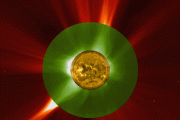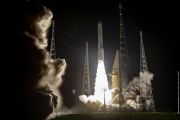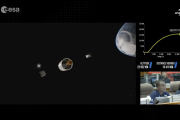
Copernical Team
10 remarkable Earth facts
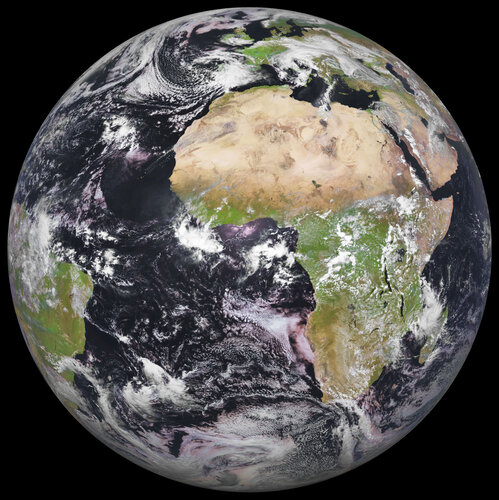
Every year on 22 April, we’ve celebrated Earth Day and the beautiful planet we call home. Earth Day, established in 1970, has been used to highlight our planet’s environmental challenges and raise awareness of the importance of protecting our world for future generations. But shouldn’t every day be Earth Day? We only have one beautiful planet after all. We hope you enjoy this curated list of 10 of the most remarkable facts about Earth.
Scroll to the end of the article to take part in ESA's 'You like, we plant' campaign.
Solar sails could guide interplanetary travel, says new study (Update)
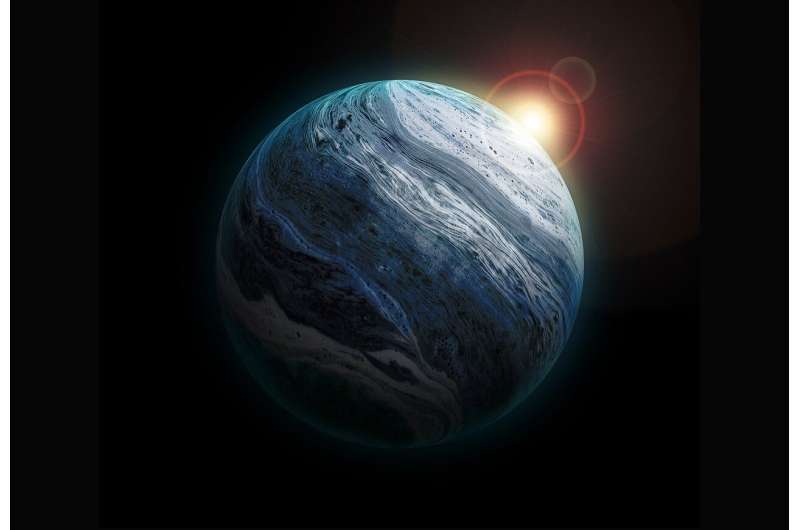
Space travel has brought us to our next-door neighbor, the moon, and to the depths of our larger solar community inhabited by giants such as Saturn and Jupiter.
In 1982, Voyager 2 whisked past Uranus closer than any other spacecraft has since, and now is sailing—46 years after its launch—through the constellation of Pavo, some 179 light years from Earth.
But there have been few comparable satellite missions in recent years. Cost is the main obstacle, but time frame is also a factor. The design for such long journeys takes years to calculate, and planning and construction of a space vehicle would take about a decade. Factoring in the time a satellite would require to reach distant targets means our next peek into the stars will likely not come any time soon.
A team of scientists led by Slava Turyshev of the Jet Propulsion Laboratory at the California Institute of Technology, which launched the Voyager satellites back in 1977, is anxious to get space exploration back on track. The team proposes a novel means of travel that could get us to the stars faster and cheaper.
China's space station achieves 100 pct regeneration of oxygen resources
 China's space station, with the Shenzhou-15 crew now in orbit, can produce 100 percent of its oxygen supply through its onboard regeneration system, according to a space technology conference in Harbin, capital of China's northernmost Heilongjiang Province.
The development reflects that fundamental transformation of the environmental control and life-support system for China's manned space
China's space station, with the Shenzhou-15 crew now in orbit, can produce 100 percent of its oxygen supply through its onboard regeneration system, according to a space technology conference in Harbin, capital of China's northernmost Heilongjiang Province.
The development reflects that fundamental transformation of the environmental control and life-support system for China's manned space Icy Moonquakes: Surface Shaking Could Trigger Landslides
 A new NASA study offers an explanation of how quakes could be the source of the mysteriously smooth terrain on moons circling Jupiter and Saturn.
Many of the ice-encrusted moons orbiting the giant planets in the far reaches of our solar system are known to be geologically active. Jupiter and Saturn have such strong gravity that they stretch and pull the bodies orbiting them, causing moonqu
A new NASA study offers an explanation of how quakes could be the source of the mysteriously smooth terrain on moons circling Jupiter and Saturn.
Many of the ice-encrusted moons orbiting the giant planets in the far reaches of our solar system are known to be geologically active. Jupiter and Saturn have such strong gravity that they stretch and pull the bodies orbiting them, causing moonqu Spacewalks become 'routine' after 12th mission
 Shenzhou XV mission members conducted their fourth spacewalk on Saturday, surpassing previous crews, according to China Manned Space Agency.
In a news release on Sunday afternoon, the agency said that mission commander Major General Fei Junlong and Senior Colonel Zhang Lu completed the spacewalk and then returned to the Wentian science module. The third crew member, Senior Colonel Deng Qin
Shenzhou XV mission members conducted their fourth spacewalk on Saturday, surpassing previous crews, according to China Manned Space Agency.
In a news release on Sunday afternoon, the agency said that mission commander Major General Fei Junlong and Senior Colonel Zhang Lu completed the spacewalk and then returned to the Wentian science module. The third crew member, Senior Colonel Deng Qin Shenzhou XV mission crew members set China record
 The Shenzhou XV mission crew members carried out their fourth spacewalk on Saturday, topping previous crews, according to the China Manned Space Agency.
The agency said in a news release on Sunday afternoon that mission commander Major General Fei Junlong and Senior Colonel Zhang Lu completed the spacewalk and then returned to the Wentian science module. The third crew member, Senior Colon
The Shenzhou XV mission crew members carried out their fourth spacewalk on Saturday, topping previous crews, according to the China Manned Space Agency.
The agency said in a news release on Sunday afternoon that mission commander Major General Fei Junlong and Senior Colonel Zhang Lu completed the spacewalk and then returned to the Wentian science module. The third crew member, Senior Colon A sharper look at the first image of a black hole
 A team of researchers, including an astronomer with NSF's NOIRLab, has developed a new machine-learning technique to enhance the fidelity and sharpness of radio interferometry images. To demonstrate the power of their new approach, which is called PRIMO, the team created a new, high-fidelity version of the iconic Event Horizon Telescope's image of the supermassive black hole at the center of Mes
A team of researchers, including an astronomer with NSF's NOIRLab, has developed a new machine-learning technique to enhance the fidelity and sharpness of radio interferometry images. To demonstrate the power of their new approach, which is called PRIMO, the team created a new, high-fidelity version of the iconic Event Horizon Telescope's image of the supermassive black hole at the center of Mes International team discover new exoplanet partly using direct imaging
 An international research team led by UTSA Associate Professor of Astrophysics Thayne Currie has made a breakthrough in accelerating the search for new planets.
In a paper slated for publication April 14 in Science, Currie reports the first exoplanet jointly discovered through direct imaging and precision astrometry, a new indirect method that identifies a planet by measuring the position
An international research team led by UTSA Associate Professor of Astrophysics Thayne Currie has made a breakthrough in accelerating the search for new planets.
In a paper slated for publication April 14 in Science, Currie reports the first exoplanet jointly discovered through direct imaging and precision astrometry, a new indirect method that identifies a planet by measuring the position HD 169142 b, the third protoplanet confirmed to date
 An international team of researchers from the University of Liege (Belgium) and Monash University (Australia) has just published the results of the analysis of data from the SPHERE instrument of the European Southern Observatory (ESO), which confirms a new protoplanet. This result was made possible thanks to advanced image processing tools developed by the PSILab of the University of Liege.
An international team of researchers from the University of Liege (Belgium) and Monash University (Australia) has just published the results of the analysis of data from the SPHERE instrument of the European Southern Observatory (ESO), which confirms a new protoplanet. This result was made possible thanks to advanced image processing tools developed by the PSILab of the University of Liege. Webb peeks into the birthplaces of exoplanets
 Researchers using the James Webb Space Telescope (JWST) have taken a first look at their data that probe the chemistry of the regions of disks around young stars where rocky planets form. Already at that stage, the data reveal the disks to be chemically diverse and rich in molecules such as water, carbon dioxide, and organic hydrocarbon compounds like benzene as well as tiny grains of carbon and
Researchers using the James Webb Space Telescope (JWST) have taken a first look at their data that probe the chemistry of the regions of disks around young stars where rocky planets form. Already at that stage, the data reveal the disks to be chemically diverse and rich in molecules such as water, carbon dioxide, and organic hydrocarbon compounds like benzene as well as tiny grains of carbon and 



























